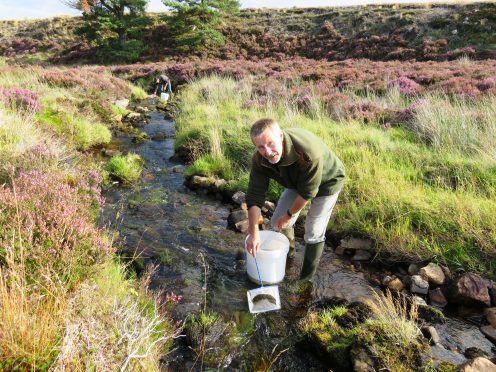A quarter of a million salmon fry are being released into Speyside burns in an effort to boost stock numbers.
The Spey Fishery Board has reared eggs until they hatch in order to increase the amount of adults returning every year.
Salmon catches on the river reached an eight-year high last year.
However, concerns have been raised by anglers and ghillies that stocks could be about to take a hit due to storms.
Spey Fishery Board biologist Brian Shaw said: “It was good to record that fry numbers had recovered well in 2017 compared to the low counts in 2016.
“The devastating effects of Storm Frank scoured out many of the salmon spawning nests in tributaries such as the River Avon and in the lower Spey.
“As anticipated, the salmon parr counts were lower in affected areas, although off-set to some extent by the quality of the parr remaining.”
Fry bred in a hatchery have now been released into burns leading into the Spey.
Eggs stripped from fish in November have been kept in incubators until they hatch about three months later.
The new-borns are then reared in tanks before being returned to rivers where their parents had been captured from initially.
A total of 250,000 will enter the water during this month with that number expected to increase to 330,000 next year.
The Tommore Burn at Ballindalloch and Ringorm Burn at Craigellachie have been stocked with fry above man-made obstacles, including distillery weirs and road culverts, in an effort to reduce the impact of them.
It is estimated that fishing on Speyside contributes about £12million a year to the local economy.
Spey Fishery Board director Roger Knight said: “We have taken on board the very real concerns raised by our ghillies and the anglers who travel so far to fish this magnificent river.
“As a result, the board is planning to increase its stocking next year to just over 330,000 fed fry, which is an increase of more than 30% in comparison to the numbers we are stocking this year.
“We shall be applying to the Scottish Government for a licence to catch the appropriate numbers of adult salmon as broodstock.
“We hope this sends a strong signal to the angling community of our commitment to maximising the River Spey’s return.”
